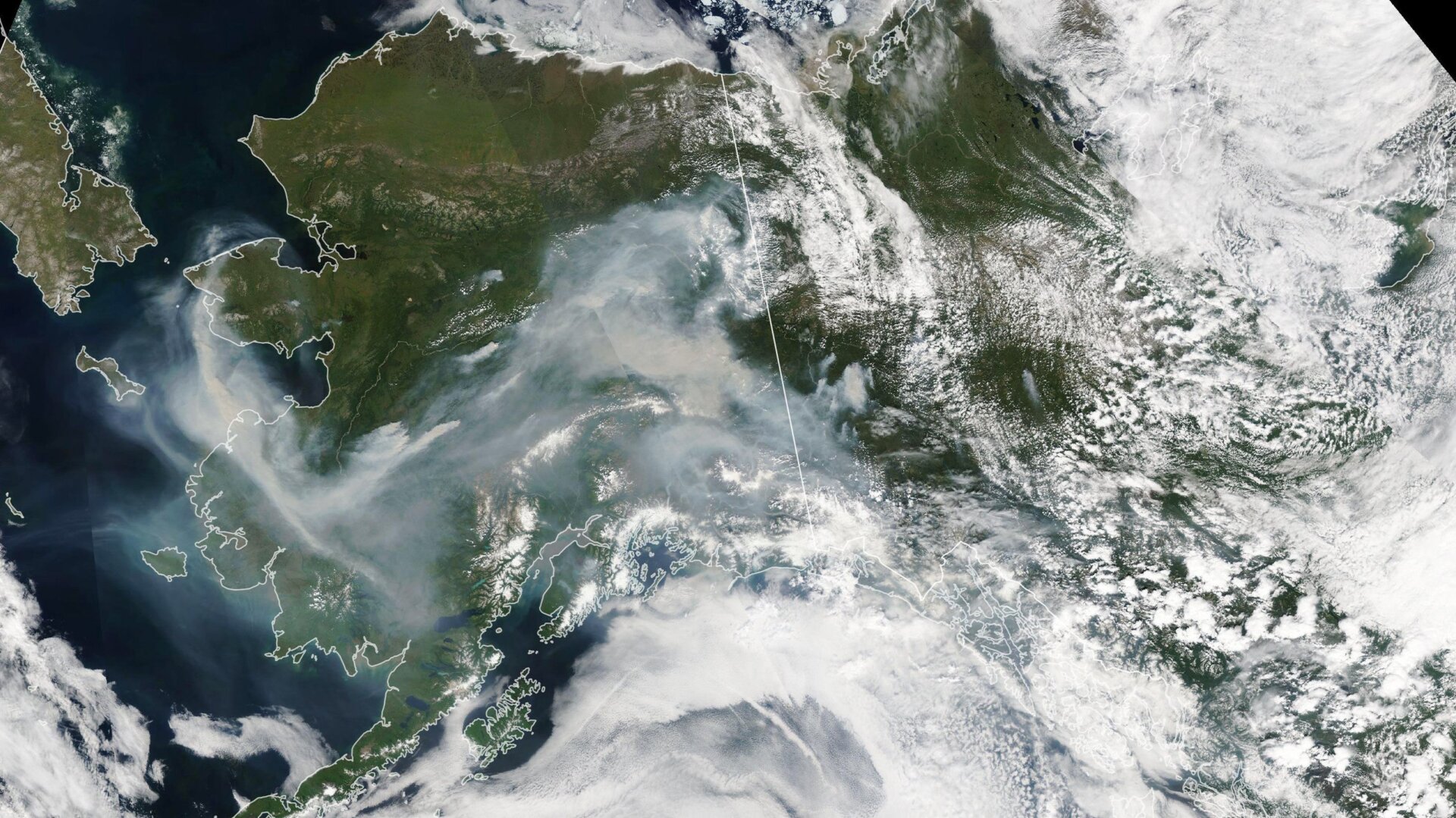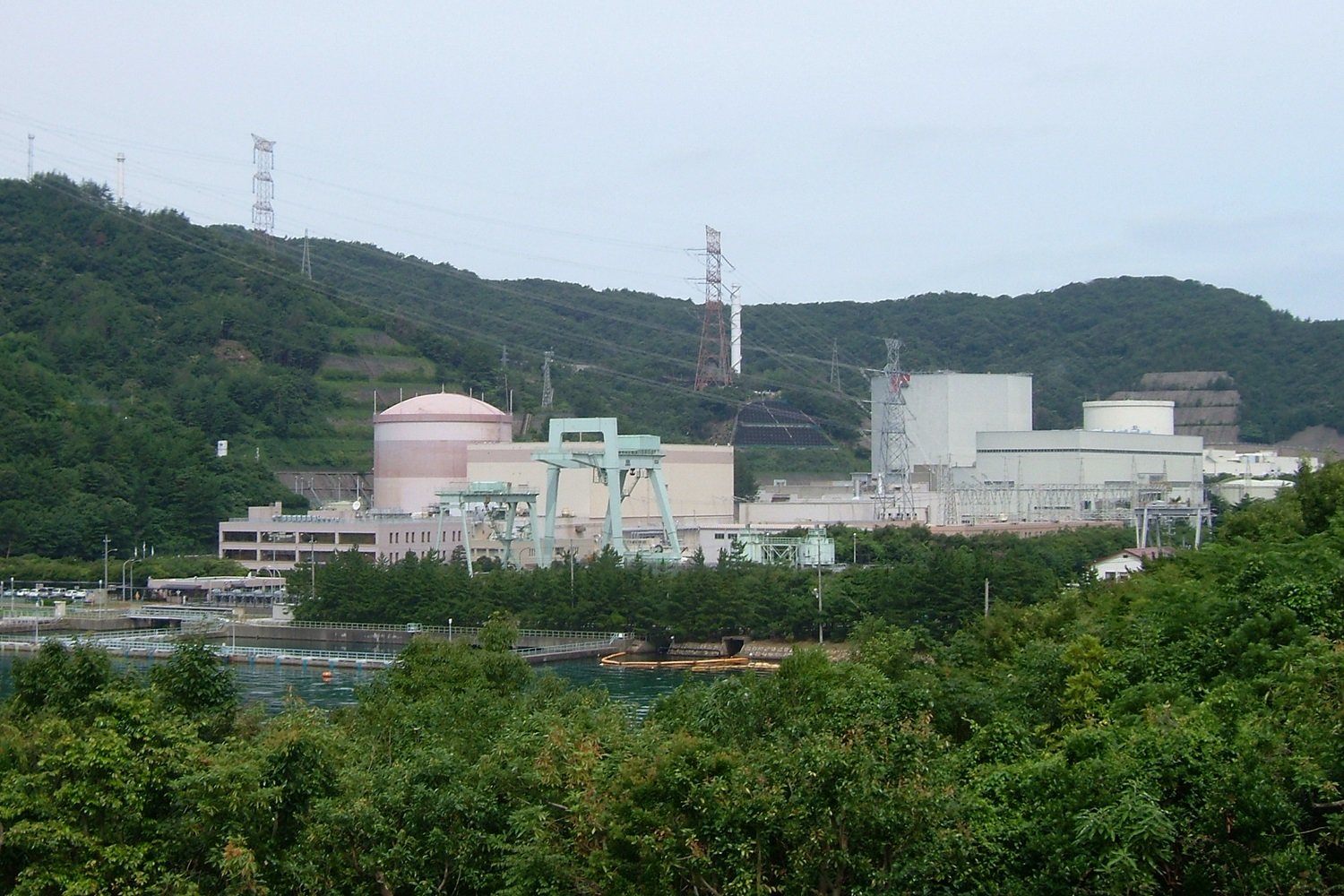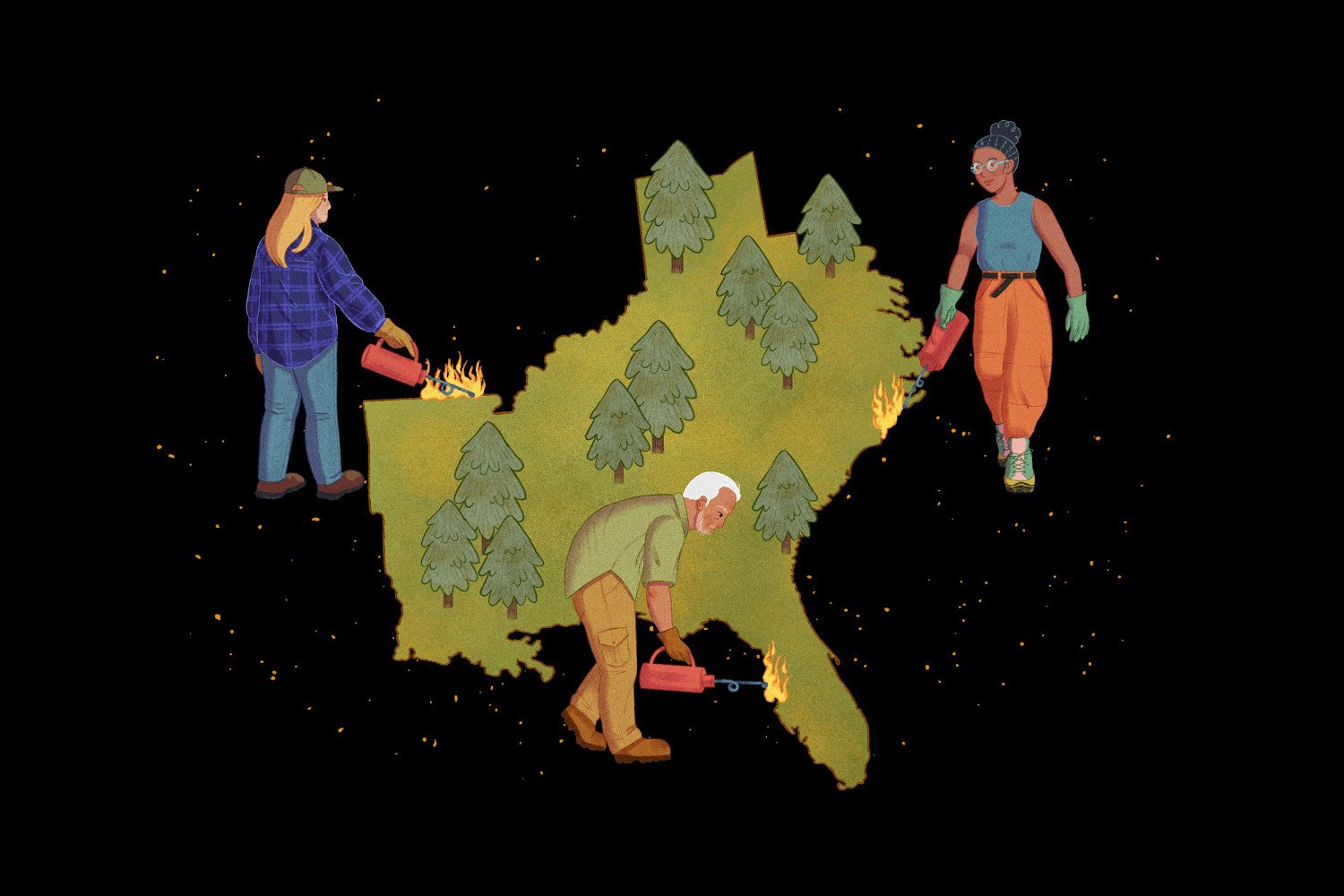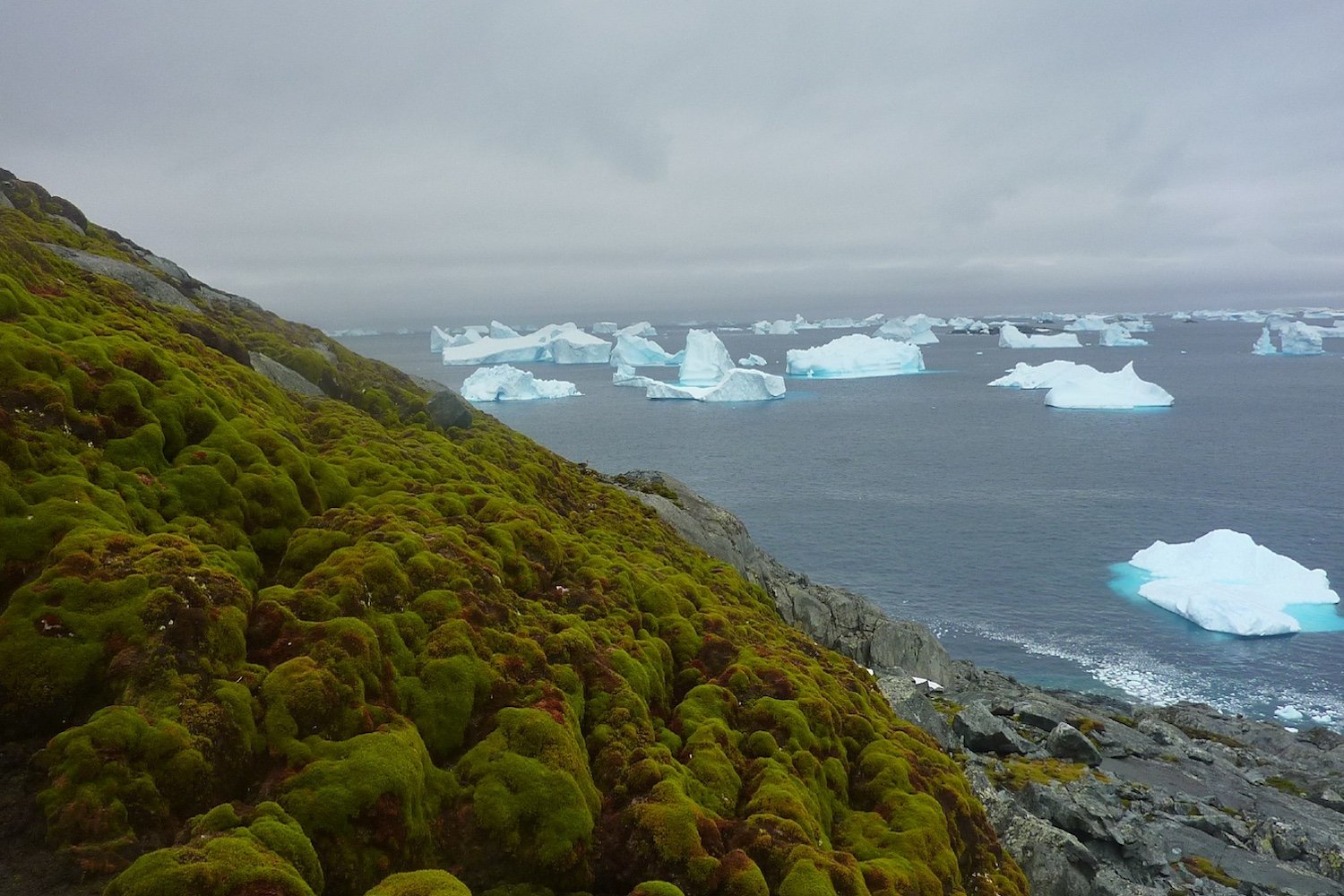Historic, record-breaking heat isn’t the only environmental malaise that’s gripped Alaska this summer. So has wildfire smoke.
An incredible satellite image taken on July 8 shows smoke spreading far and wide across Alaska as a spate of hot, dry weather causes the state’s wildfire season to kick into high gear. Dense smoke advisories and red flag fire warnings are currently in effect across interior Alaska and on the Kenai Peninsula, while concentrations of particulate matter, which can lodge in the lungs and cause breathing problems, have surged to dangerous levels around Fairbanks and surrounding communities. Alaska Center for Climate Assessment and Policy climatologist Rick Thoman, who’s based in Fairbanks, said that visibility is currently about a mile and described the air quality as “terrible,” noting that one air quality station notched a particulate matter reading of over 700 this morning. Levels over 250 are considered hazardous to human health.
“You can look right at the Sun and it’s that blood orange color” Thoman said.
https://gizmodo.com/as-alaska-thaws-everything-changes-1797914137
All the smoke is the result of an explosive intensification of Alaska’s wildfire season over the past week. Between July 3 and 10, more than 600,000 acres burned statewide, more than doubling the year-to-date burn total which now sits at 1.28 million acres. And it’s only July 10. Thoman said he’d give it a 50-50 chance that the state crosses the 2-million-acre-burned threshold by the end of the year, and he wouldn’t rule out a 3-million-acre year, which would place 2019 among the top fire seasons on record.
“It is now unquestionably a big [fire] year,” Thoman said.
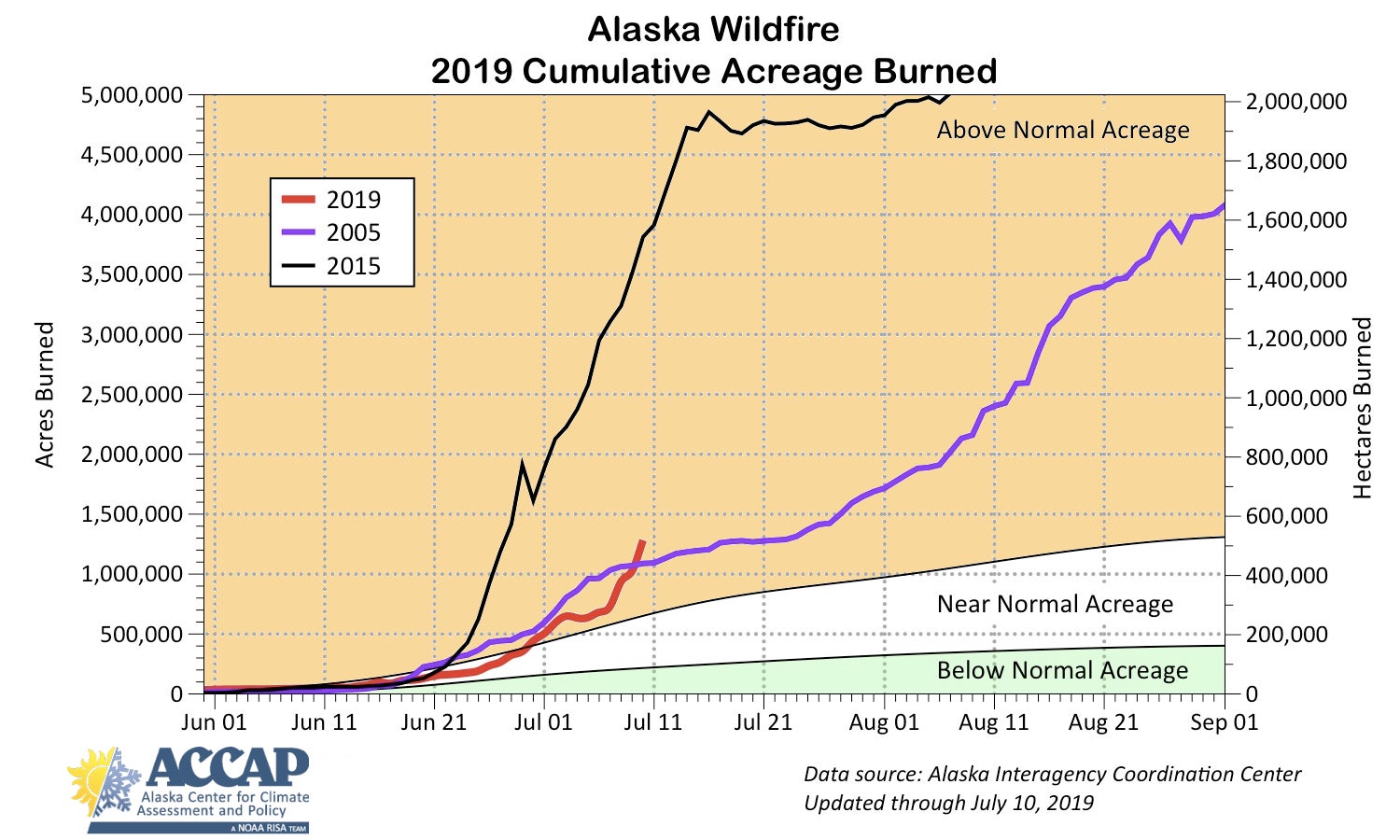
The 41 large fires the National Interagency Fire Center is currently tracking in Alaska include the Swan Lake fire south of Anchorage, which has topped 100,000 acres in size but is getting closer to containment, and the Hess Creek fire northwest of Fairbanks, now the largest fire in the U.S. at over 149,000 acres. Sparked by lightning on June 21, the fire has expanded dramatically on the heels of the last week’s hot weather and remains entirely out of control.
These fires and many others are being fueled by a week of record-shattering heat, which, after the second-warmest June in Alaska’s history, has turned much of interior and southern part of the state into a tinderbox. Merritt Turetsky, a fire ecologist at the University of Guelph who studies the ecosystems Alaska and northern Canada, explained that very warm, dry weather following a period of “pretty ample lightning activity” has created the ideal conditions for fire to spread. And even though temperatures are forecast to fall from record-breaking levels back to simply warm by late week, Turetsky expects the extreme fire activity will persist—in part because of deeper layers of the forest floor have become very dry.
“Because of the intense heat wave we’ve had, those deep duff layers [layers of moss and lichen] are now dry,” Turetsky said. “It’s going to take significant rainfall to wet those layers up. And I think it’s pretty unlikely to happen.”
Thoman also wasn’t optimistic about the fire season letting up soon.
“The heat wave in south Alaska is breaking and temperatures will likely tail off a bit in the interior with more thundershowers expected, but we’re going from much above normal to above normal,” he said. “And with the return of thunderstorms and the ground very dry, the fuels are very receptive [to burning]. The fear is that things will get much worse before they get better.”
Alaska has always had big fire seasons, but with climate change turning up the heat on the state, scientists expect to see more of them. They’re also worried about the very nature of fire season changing and what it could mean for the climate if, say, we start to see more deep-burning fires that torch carbon that’s been sequestered for thousands of years. And Turetsky said, researchers are watching for ecological shifts as fire becomes more prevalent in ecosystems that didn’t use to burn often, like the currently ablaze Kenai Peninsula.
“We know that these large fire seasons and extreme fire weather conditions are on the rise,” Turetsky said. “This is part of the consequence of climate change.”
